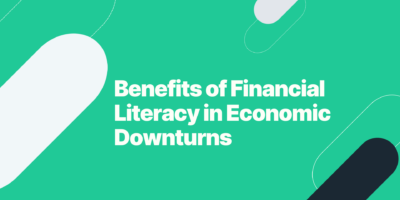
Benefits of Financial Literacy in Economic Downturns
Are your employees financially prepared for the next downturn? Or is poor financial literacy already costing your company more than you realize?

Market uncertainty and stock market crashes can affect any 401(k) holder or provider, especially those that rely heavily on stocks. Following the most recent crash in 2020, employees are looking for answers on how to protect a 401(k) from a stock market crash and preserve their savings.
Statistics show that the 401(k) retirement fund is becoming the preferred financial safeguard for millions of Americans thanks to its tax reduction, flexibility, and higher contribution limits.
However, a 401(k) is not risk-free and often relies on the volatile stock market. Thus, it helps to know how to navigate fluctuating markets and protect 401(k) savings in a financial crisis.
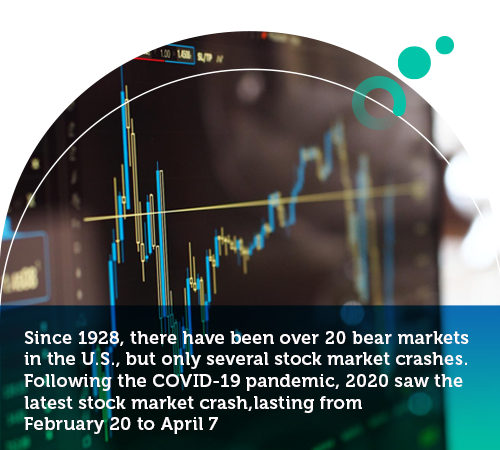
A stock market crash is the sudden and simultaneous decline of stock value, with prices falling more than 20%. The impact is often unpredictable and follows after a major event that causes economic disturbances. While this is the incentive, the crash gains full force with impulsive stock selling due to panic and fear.
The stock market is exceptionally unpredictable, and price drops are just as regular as a price surge. But a crashing market is not the same as a declining one, also called a bear market.
While the first one has dramatic price plunges, a bear market occurs when stock prices fall over an extended period, characterized by pessimistic investor sentiment.
Since 1928, there have been over 20 bear markets in the U.S., but only several stock market crashes. Following the COVID-19 pandemic, 2020 saw the latest stock market crash, lasting from February 20 to April 7.
The crash had significant consequences on the economy, affecting the retirement plans of many Americans.
In precaution of another impact, many are now looking for ways to protect their savings.
One of the best things about 401(k) is that it gives employees the freedom to invest on their terms. But even with such an advantage, a crash can affect savings. Thus, it helps to understand where to put 401(k) before the market crashes and why.
Many investment options for the 401(k) retirement plan include stocks, bonds, and cash.
Often, in earlier stages of employment, stocks account for most of the 401(k) investments. With proper asset allocation, the stock-bond ratio should change over the years to mitigate risks.
However, stocks remain a popular investment choice thanks to their high returns. While that’s a tremendous advantage when prices follow an upward trajectory, an unexpected stock market crash can do a lot of damage.
The 2008 financial collapse is one of the cleanest examples of the market’s devastating impact on corresponding 401(k) retirement plan assets. More than 21 million participants endured changes in average 401(k) balances from January 1, 2008, to January 20, 2009. And the only distinction, depending on the participant’s account balance, was the amount lost.
The best-case scenario is suffering losses that the employee can recover from in the following years. The worst-case scenario is wiping out years, even decades’ worth of savings. So, it’s crucial to keep a close eye on the different investment options to avoid or cut down potential losses over a stock market crash.
However, investing in retirement security is a long-term proposition for employees. One that requires implementing a strategy that has forethought mitigating losses, sometimes to an appreciable extent.
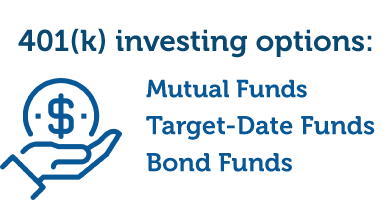
The 401(k) is a popular retirement plan because it offers many investment opportunities. Unlike an IRA, the 401(k) is employer-sponsored and has excellent tax benefits. Plus, it allows employees to add more money to their savings and cash out their 401(k) before retirement.
There are two types of 401(k)s, traditional and Roth.
The main difference is that the first is pre-tax, while Roth 401(k) is a post-tax savings account. After deciding between the two, savers can choose how they invest their money. But the many possibilities sometimes make it challenging to select the best one.
The best investing option largely depends on several factors, including individual preferences, retirement goals, age, and risk tolerance.
Knowing the different types of investments is essential so that savers know where to put 401(k) before the market crashes.
Currently, the most common 401(k) investment option is a mutual fund that can range from very conservative to aggressive. And some of the most popular choices are stock, bond, and target-date funds.
Mutual funds are companies that collect money from people to strategically invest on their behalf in securities like stocks and bonds.
There are many types of mutual funds. They can be more conservative, balanced, or aggressive based on the risk factor. And in terms of securities, mutual funds usually trade bonds, stocks, or both.
Stock mutual funds, for example, come with higher risks and better returns, and bonds-only mutual funds are the opposite.
In both cases, buying shares and debt to withstand market volatility and create a rich portfolio is in the hands of a professional who does this for a fee. Thus, it’s essential to consider potential management expenses.
With mutual funds that include stocks, there’s always the risk of a price plunge that can significantly damage a pension fund. That makes them a slightly riskier option than target-date and bond mutual funds and more suitable for younger employees who can withstand losses early on in their employment.
Target-date funds have a similar structure to mutual funds. Still, they come with lower risks and use a specific time frame to maximize the investment returns.
As the name suggests, these funds set up target dates for the person’s retirement. Then, based on the account holder’s age, they determine the type of assets to invest in to match the risk tolerance.
The target-date funds heavily invest in stocks for younger account-holders.
That brings higher profits and more substantial risks in a stock market crash. The closer one is to retirement, the more this ratio shifts toward bonds as a safer alternative. A few years before the target date, these funds allocate a significant percentage of the money in bonds to protect the savings from market fluctuations or a stock market crash.
Their specific investment structure and passive retirement approach make target-date funds a preferred 401(k) investment plan. They are also an excellent alternative for employees who don’t want to manage their investments personally and want to set up their 401(k) without constantly thinking about it.
Bond funds are another popular 401(k) investment option, one in which savers profit from buying government, convertible and corporate-issued bonds with periodic interest payments.
Simply put, bond funds are much like stock mutual funds but come with lower risks and lower gains. So, to move 401(k) to bonds before a crash can be a smart decision since their main advantage is that they can usually withstand a stock market crash.
Bond funds are also suitable for employees close to retirement who can’t afford to lose their 401(k) savings or quickly get back on their feet after an economic collapse.
An unexpected stock price plunge can seriously damage retirement prospects. That’s why investors must learn how to protect a 401(k) from a stock market crash.
Significant factors in preserving the much-needed economic stability after retirement are the employee’s age and risk tolerance.
Some experts still use traditional guidance of subtracting the age from 100 to get the stock portfolio percentage. Namely, a 30-year-old would roughly have 70% stocks and 30% bonds in their 401(k). However, this is not a rule but a pointer and can change based on the employer’s retirement goals.
Generally, younger employees who are only now entering the workforce are more resistant to market crashes. Thus, a portfolio rich in stocks could work best for them since it’s easier to bounce back and recover from losses long before their retirement date.
Employees nearing retirement must take calculated risks to protect 401(k) from a crash, consider talking to a financial planner, and turn to a safer alternative like government bonds.
However, this is only the tip of the iceberg.
There are many ways to ensure the survival and prosperity of a 401(k) plan, ranging from mixed investment options to proper response to market fluctuations.
A 401(k) plan is an investment for the future. And rule number one in investing is not to put all eggs in one basket – or opt for diversification.
A diverse 401(k) portfolio contains a mix of assets like shares, bonds, commodities, and even cash.
Despite its appeal, the stock market is just one of the options for investing. The 401(k) account holder must carefully choose high-performing stocks from the U.S. and international markets to minimize risks. So that if a single company’s shares lose value, the retirement fund can withstand the losses.
But to avoid the repercussion of a complete stock crash, a 401(k) account should also rely on more stable securities.
One way would be to move 401(k) to bonds before a crash occurs.
In times of financial uncertainty, bonds tend to grow in value.
It’s a phenomenon called the “flight to quality.” Although there’s no guarantee that bonds will increase in value, governmental bonds tend to perform better and carry fewer risks. Thus, they make for a well-diversified portfolio.
Finally, there is also the option of keeping 401(k) savings in cash. While it’s good to have some of the assets in cash to protect them from a sudden market crash, keeping the total amount in cash could be risky due to inflation.
For a diverse 401(k), savers need reasonable asset allocation.
Asset allocation is how much an employee invests in each security and how well this balances risk and reward. That can differ based on several factors, including personal preferences, timing, retirement age, risk tolerance, etc.
There are many 401(k) asset allocation strategies. For example, a target-date fund is a hustle-free allocation approach. But account holders can also opt for balanced funds or model portfolios. Additionally, a financial advisor can recommend a personalized asset allocation based on the account holder’s goals.
A well-diversified 401k plan requires regular maintenance or asset allocation for best performance. But over time, market prices might affect the desired asset distribution and fail to meet long-term retirement goals. That’s when the 401(k) needs rebalancing.
The assets investors initially set for 401(k)s can change direction over time, depending on the overall returns. For example, if the required stock vs. bond ratio is 60:40, a bull market can change the balance after some time.
Presuming the percentage of stocks reaches 65% or 70%, the risk of losses in a market crash is also more significant. Investors must sell stocks and buy bonds to restore the balance, thus protecting 401(k) before a crash.
Target-date funds are the easiest way to rebalance a portfolio. Accountholders who want more control over their investments should regularly check their fund balance and consult financial advisors for a more tax-efficient approach.
Market fluctuations of a crash can instill fear in 401(k) holders, pushing them to put their 401(k) savings on hold or withdraw their money earlier. But, by doing this, they lose money in IRS tax penalties and the chance to buy assets at much lower prices.
The more practical thing to do is to keep contributing to 401(k)s for the duration of the employment or as long as the employees have the means to do it.
There are several reasons why.
Primarily to regain profit. During a bear market or a crash, instead of backing down, savers can take advantage of buying low and then selling high with the help of a professional 401(k).
Another good reason to keep contributing to 401(k) is when employers offer to match their employees’ 401(k) contributions. That adds “free money” to retirement savings. So, the larger this contribution is, the longer the 401(k) will last.
Finally, regular 401(k) contributions get the best use of the double tax deduction. Employees get a tax decrease for each paycheck contribution and get the advantage of growing their retirement money tax-free before a withdrawal.
The market will always fluctuate, so investors should make the most of it. There are ways to increase 401(k) funds in both pessimistic and optimistic market sentiments and minimize losses after a crisis.
It’s certainly not easy for employees to let their entire life-worth of savings depend on such unpredictable circumstances. Nonetheless, they can efficiently secure a comfortable retirement with the appropriate investment plan and learn a few lessons on market volatility and 401(k)s.
| The market is unpredictable. But both price growth and decline are part of the economic cycle, and investors can turn this to their advantage. |
| The 401(k) retirement plan depends on individual goals. However, it's essential to choose the right investment plan to navigate through price fluctuations successfully. For the best results, account holders should consult with a professional. |
| Successful investors don't let fear and panic take over. Instead, they make logical decisions that can effectively turn losses into gains even in unstable markets. |
| Consistent investments give good results. The market volatility shouldn't stop employees from investing in their 401(k)s. |
It’s almost impossible to predict when a stock market crash will happen and how long it will last.
Employees need to choose a good investment option and keep an open eye on the market. It’s also useful for them to stay prepared and learn how to protect 401k from a stock market crash. That way, they can find peace of mind long before and after their retirement.
The content in this blog post is for general, informational purposes only and is not meant to constitute legal, tax, accounting, or investment advice. You should consult a qualified legal or tax professional regarding your specific situation.
Browse our curated list of vendors to find the best solution for your needs.
Subscribe to our newsletter for the latest trends, expert tips, and workplace insights!

Are your employees financially prepared for the next downturn? Or is poor financial literacy already costing your company more than you realize?

Explore valuable intent data statistics to learn how it can help companies better understand prospects and offer adequate solutions to their needs.
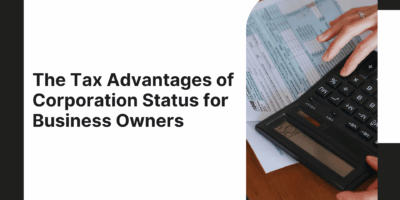
What if your biggest tax lever isn’t a deduction but your legal structure?
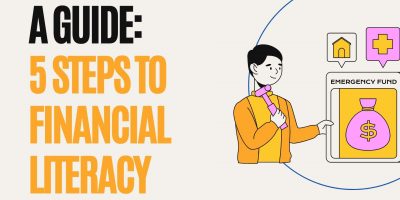
Where should one start when building financial literacy? Discover key strategies and tools to take control of your finances and secure a brighter financial future.
Used by most of the top employee benefits consultants in the US, Shortlister is where you can find, research and select HR and benefits vendors for your clients.
Shortlister helps you reach your ideal prospects. Claim your free account to control your message and receive employer, consultant and health plan leads.